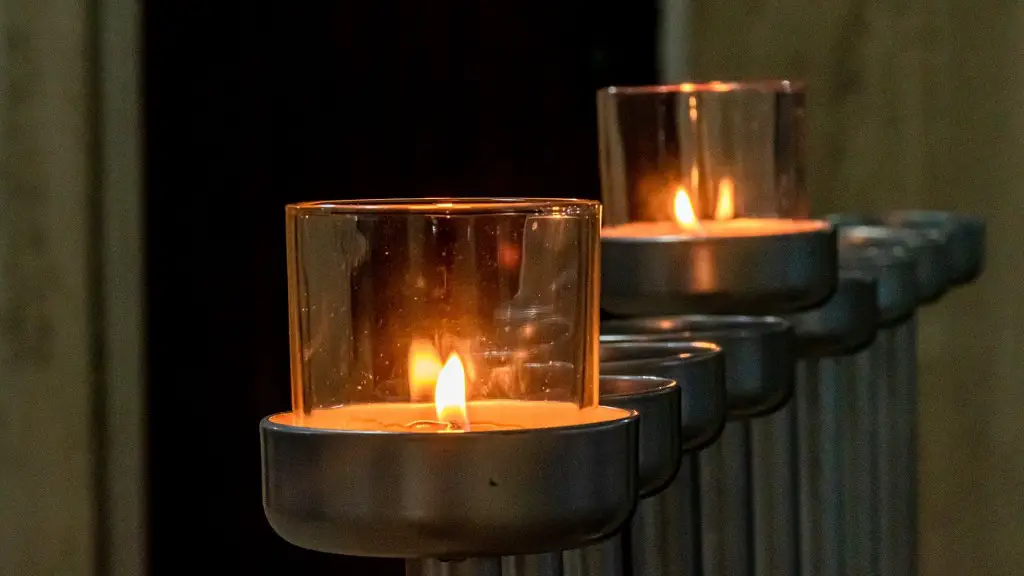How Many Different Denominations of Christianity Exist in 2020?
With more than 2 billion followers worldwide, Christianity is the largest religion in the world. Christianity is composed of many different churches and denominations, all providing individualised practices, beliefs, and interpretations of the faith. In 2020, estimates suggest that the total number of branches of Christianity is 33,800.
Generally speaking, Christianity is divided into three large groupings: Roman Catholic, Protestant and Eastern Orthodox. Roman Catholicism is the largest subsection of Christianity and is composed of churches and organisations that are part of the Latin Church and in full communion with the Roman Pontiff, the Bishop of Rome. Protestantism and Eastern Orthodox Christianity describes churches and organisations that are not in full communion with the Bishop of Rome.
Each of these main branches are further divided into denominations, which provide unique and individualised interpretations of the faith and can often have very different practices and views. The differences between denominations and groups often centre around differences in doctrine, interpretation of Scripture and authority within the church.
According to a survey conducted by the Pew Research Center in 2018, Protestants comprise the largest religious tradition in the United States, accounting for around 48% of adults. Numbers show that the largest denomination is the Baptist Church, followed by the Methodist Church, Pentecostal Church, Lutheran Church and Church of God. In total, there are around 23,000 Protestant denominations.
The Roman Catholic Church is the second largest grouping and is composed of 1.2 billion people worldwide. In the United States, Catholics comprise around 23% of adults, with numbers showing that the largest denomination is the Catholic Church.
The third largest group is the Eastern Orthodox Church, composed of around 260 million people worldwide and approximately 4% of US adults. Traditionally, Eastern Orthodoxy is comprised of the Greek Orthodox Church, Russian Orthodox Church, Serbian Orthodox Church, Romanian Orthodox Church and the Armenian Orthodox Church, among others. In total, there are around 300 organisations associated with Eastern Orthodoxy.
In addition to these main branches, there are a variety of other Christian denominations that fall outside the three main groupings. These denominations often combine elements of both Protestantism and Catholicism and can include the Moravian Church, Unitarian Universalism, the Quaker Church and the African Methodist Episcopal Church. In total, there are around 10,500 churches not directly affiliated with the three main branches of Christianity.
Denominations of Protestantism
In 2020, Protestantism is estimated to be composed of around 23,000 denominations worldwide. Protestantism is divided into two major groupings; evangelical and mainline denominations.
Evangelical denominations are offshoots of Protestantism that focus on an emphasis on evangelism and missionary work. Examples of evangelical denominations include Baptists, Assemblies of God, Presbyterians and Pentecostal churches.
Mainline denominations are more traditional denominations that have a greater focus on worship services, sacraments and rituals. Examples of mainline denominations include Lutherans, Methodists and Anglicans.
Within these two main groupings, there are further divisions. The different denominations are divided primarily due to differences in doctrinal interpretation. These disagreements largely centre around views on the authority of Scripture, gender roles and issues related to social justice.
The best way to understand the differences between Protestant denominations is to look at individual organisations and churches. In the US, for example, the Baptist Church is a non-trinitarian evangelical denomination, while the Lutheran Church is a trinitarian mainline denomination.
Denominations of Catholicism
Catholic denominations are the largest grouping of Christianity, with nearly 1.2 billion adherents worldwide. It is divided into three main sects; Latin, Eastern Rite and Oriental.
The Latin Catholic Church is by far the largest branch of Catholicism and is composed of around 1 billion people. The Latin Rite is located in the western regions of the world, with the majority of adherents located in Latin America, Europe and the United States. It is divided into twenty-three individual churches, organised by geographic region and cultural heritage.
The Eastern Rite Catholic Church is composed of churches located in eastern regions of the world, such as Eastern Europe and the Middle East. This branch is estimated to be composed of around 7 million people. It is made up of fourteen individual churches whose teachings and practices differ from that of the Latin Catholic Church.
Finally, the Oriental Catholic Church is composed of churches located in non-western regions of the world, such as India and the Philippines. This branch is estimated to be composed of around 11 million people. It is made up of nine individual churches, each with its own unique aspects, languages, customs and traditions.
In general, the differences between Latin, Eastern and Oriental Catholic denominations can be found in the ways in which they interpret and implement the teachings of the Catholic Church. The Latin Church is considered to be more traditional and conservative, while the Eastern and Oriental Churches are known for their adherence to more progressive interpretations of the faith.
Denominations of Eastern Orthodoxy
The Eastern Orthodox Christian Church is composed of around 260 million followers worldwide, making it the third largest branch of Christianity. This branch is divided into four main groupings; Greek Orthodox, Russian Orthodox, Serbian Orthodox and Romanian Orthodox. Each group has its own unique customs and practices, but the overall teachings and beliefs remain the same.
The Greek Orthodox Church is estimated to be the largest and is comprised of around 150 million adherents. It is centered in Greece and is divided into thirteen individual churches located in the United Kingdom, North America and Eastern Europe.
The Russian Orthodox Church is the second largest group and is composed of around 70 million members. It is based in Russia, but there are also churches in Ukraine, Belarus and the United States. In total, there are around thirteen individual churches affiliated with the Russian Orthodox Church.
The Serbian and Romanian Orthodox Churches are the two smallest groups, with estimates suggesting that they each have around 10 million members. Both churches are based in their respective countries, but have churches located in many other parts of the world. The Serbian Orthodox Church is composed of eleven individual churches while the Romanian Orthodox Church has five.
Generally speaking, differences between the four Eastern Orthodox groups can be found in language, culture, customs and practices. For example, the Russian Orthodox Church is known for its traditional and conservative interpretation of the faith, while the Romanian Orthodox Church is known for its progressive interpretations.
Denominations of Other Christian Movements
The other branches of Christianity make up the remaining 10,500 denominations worldwide. These are often offshoots of Protestantism and Catholicism and can include denominations such as the Moravian Church, Unitarian Universalism, the Quaker Church and the African Methodist Episcopal Church.
In general, denominations that fall under the “other Christian movements” banner are united by their acceptance of Christ and their common interpretation of the Bible and teachings of the church. However, they tend to have very different views on social issues, such as gender roles, the authority of the church, and issues related to social justice.
For example, the Moravian Church is an evangelical denomination that emphasises a personal relationship with God and has a focus on evangelism. By contrast, the Unitarian Universalism is a progressive denomination that emphasises reason and personal autonomy, and has an acceptance of all religions.
In addition, the Quaker Church emphasises religious dissent, pacifism, and individualism, while the African Methodist Episcopal Church is a mostly African American denomination that emphasises social justice and is known for its outspoken opposition to racism.
Example of Denominations
To better understand the differences between denominations, let’s look at a few examples.
The Anglican Church is a mainline denomination of Protestantism with around 77 million adherents worldwide. It is divided into 39 individual denominations located in different parts of the world, all sharing a common interpretation of the faith.
The Church of Jesus Christ of Latter-day Saints is an offshoot of Protestantism with around 17 million members worldwide. It is divided into sects called branches, which focus on communal living and accept the teachings of their founder and prophet, Joseph Smith.
The Coptic Orthodox Church is an Eastern Orthodox denomination with around 10 million followers worldwide. It is divided into 58 individual organisations, each with a unique interpretation of the faith.
Finally, the Church of Scientology is an independent church with around 12 million members worldwide. It is divided into 31 individual organisations, each with unique teachings and focuses on spiritual and personal growth.
Conclusion
In summary, Christianity is composed of many different denominations and organisations, all with unique beliefs, practices and interpretations of the faith. Estimates suggest that the total number of denominations is 33,800, with Protestantism and Catholicism being the two largest branches, each with around 23,000 and 1.2 billion adherents respectively. The Eastern Orthodox Church is the third largest branch with around 260 million members, while the other denominations make up the remaining 10,500.


